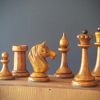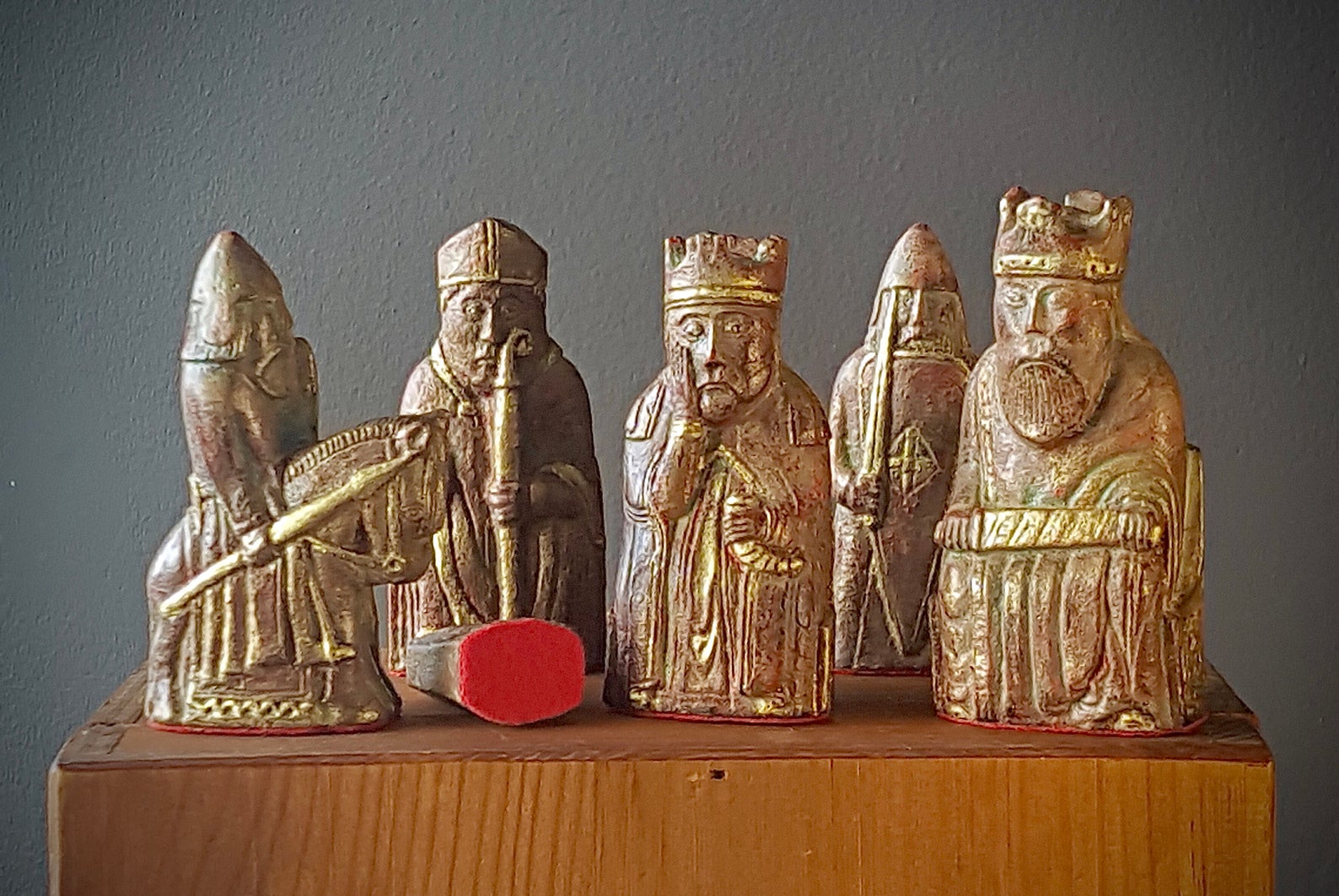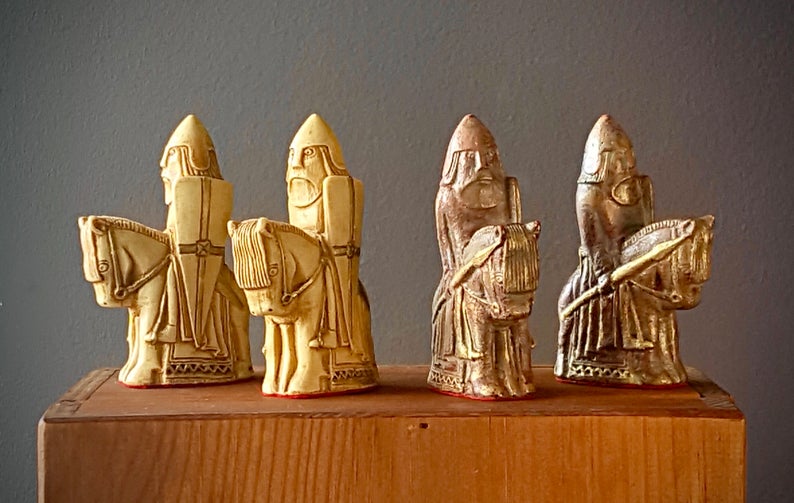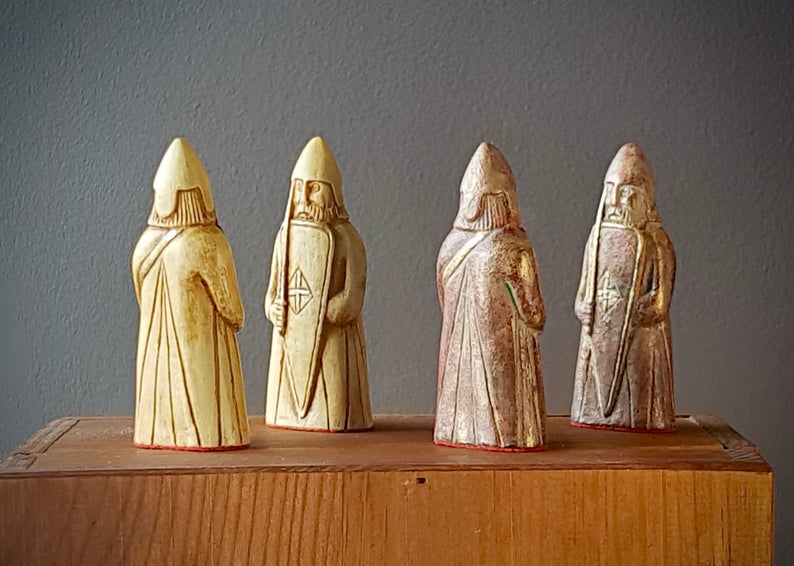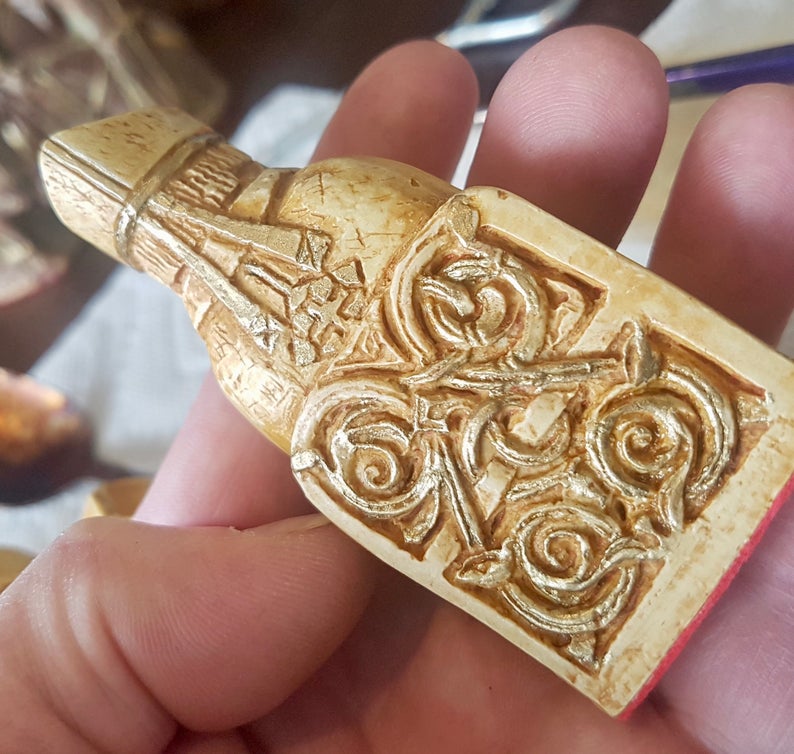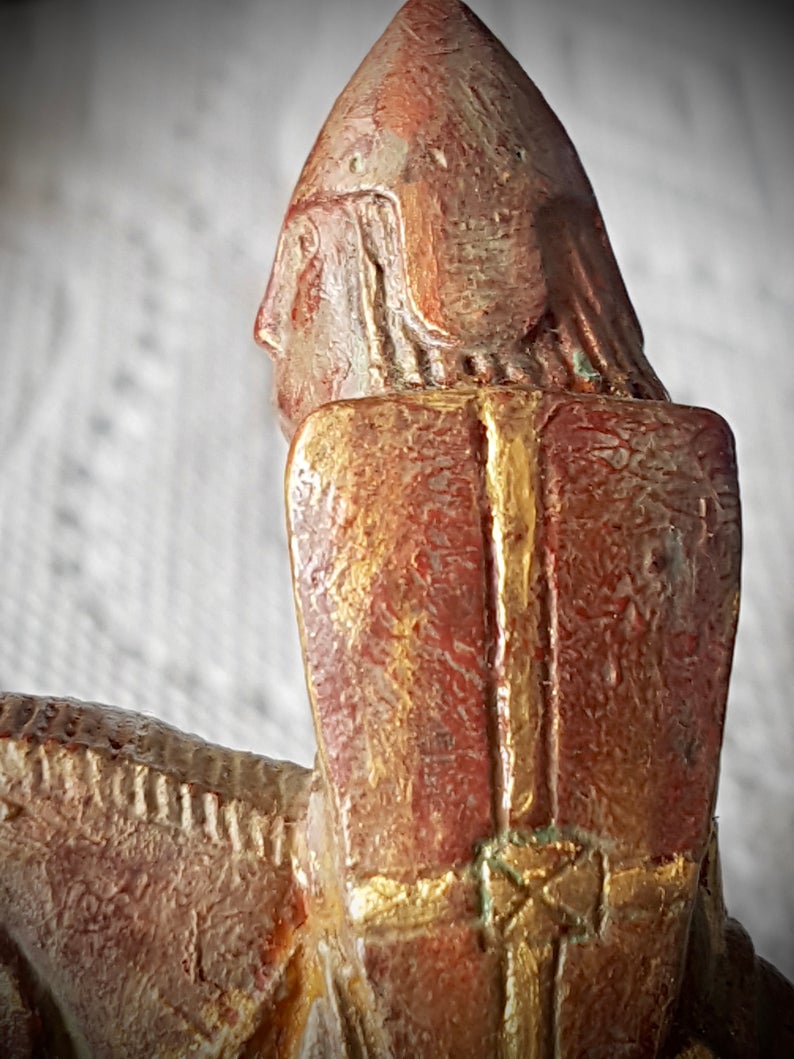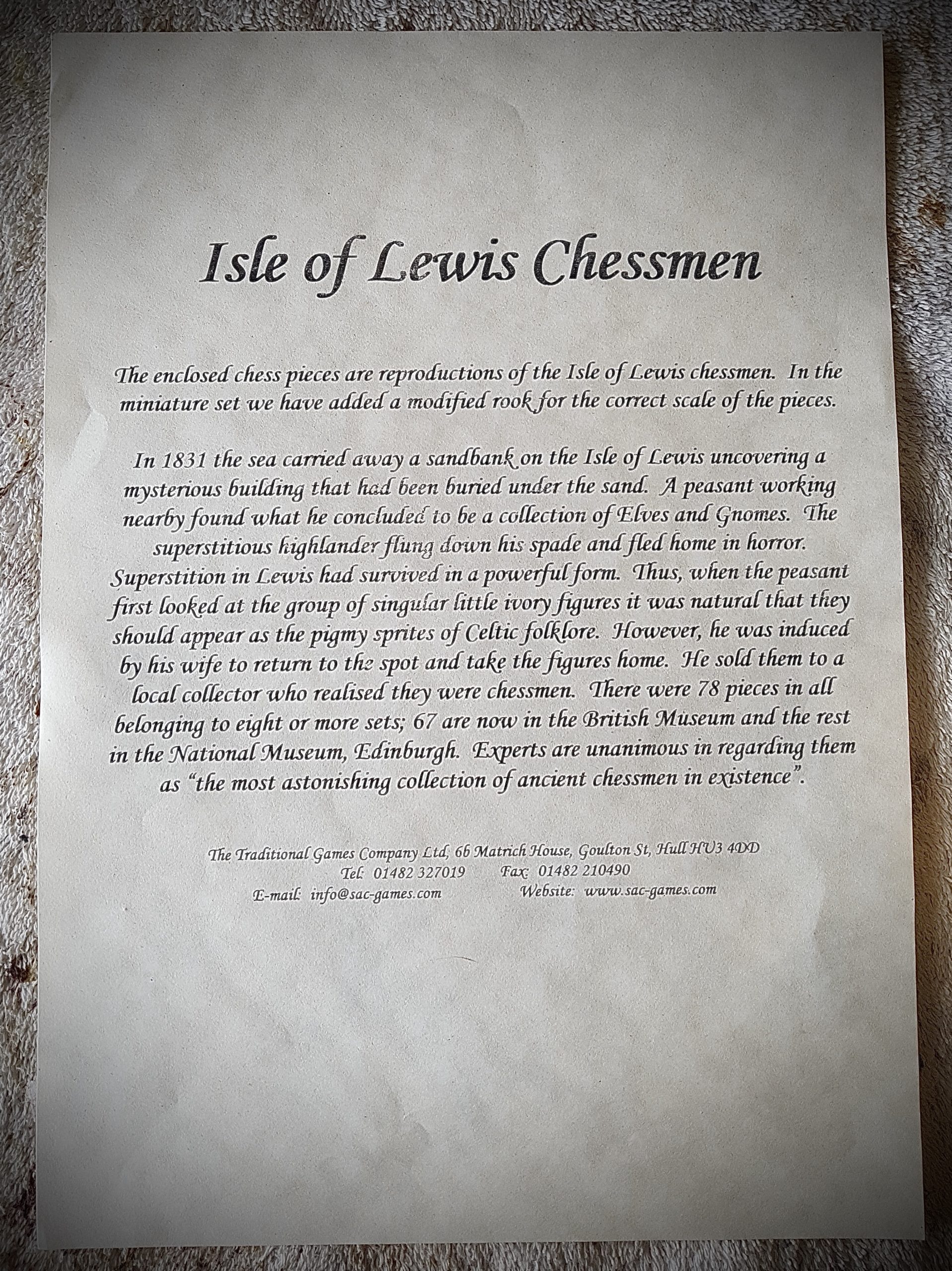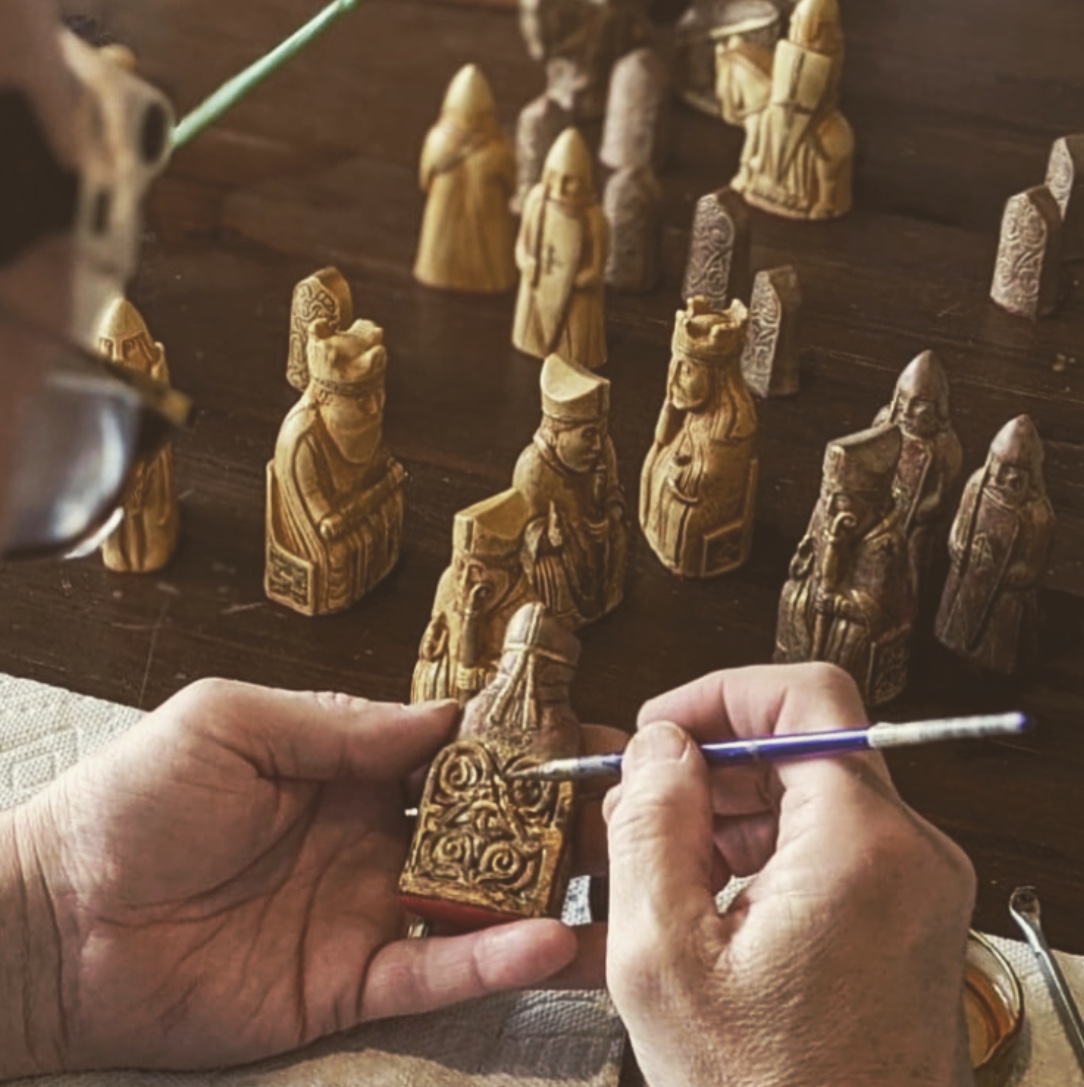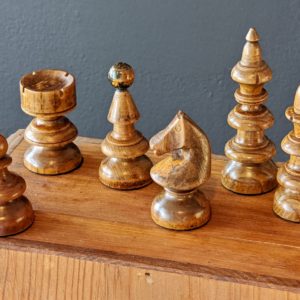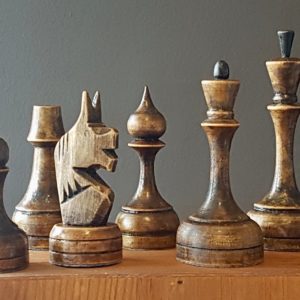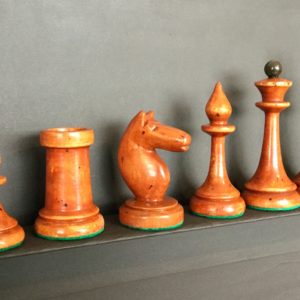*SOLD* Eilean Leodhais (Isle of Lewis); Vintage ‘Studio Ann Carlton’ Hand-Painted Chess Set, circa 1980
Eilean Leodhais (Sc. Gaelic; Isle of Lewis); 32 weighty (crushed marble) chessmen without board, hand-painted, ivory vs. bronze, made in Hull, England by Studio Ann Carlton, circa 1980-2003
King 8.9cm 3 1/2” weight 136g, base width 4.4cm 1 3/4”; Queen 8.3cm 3 1/4” 103g, Bishop 8.3cm 86g, Knight 8.3cm 93g, Rook 8.3cm 61g, Pawn 4.1cm 13g. W: red felt bases, B: same
“The most astonishing collection of ancient chessmen in existence” is how most chess historians described these chess pieces when they were unearthed at an old Viking settlement in Uig, Scotland, during the early 1830s. The 74 original pieces (carved from walrus ivory) have been dated to the 12th century when the parish of Uig (from Old Norse, vik, or ‘bay’) like the Isle of Lewis itself and much of the Outer Hebrides, was ruled by Norsemen invaders from nearby Scandinavia who had colonized this remote outpost – a stepping stone, if you like, to the western shores of the Scottish mainland.
The various tales of just how they were discovered is the subject of the SAC certificate that came with the set and a simple click of the mouse will tell you all you need to know about this famous set in seconds.
This particular set has been in my possession for many years and has rarely been used as I simply wasn’t fond of the waxy, deep purple finish of the dark pieces. Lately, however, inspired by a well-known chess collector from Hawaii who has a passion for these ancient pieces, I decided to elevate, or rather ‘tone down’ the original waxy finish with a creation of my own Giving them a distinctly more ‘earthy’ or ‘organic’ feel.
On some of the original ivory pieces, they found minute traces of “red stain” (possibly from ‘rose madder’ roots of the Rubiaceae family) so I decided to use the earthy terracotta pigment Burnt Sienna as a base. Some years ago I had already coated the sheathed swords of both kings in 24 karat gold-leaf, the leftovers from an old work project, so I decided to expand on this idea using a mixture of leaf and iridescent metallic paints on the rest of the pieces.
The light pieces have been kept close to the original, I have merely highlighted the intricate carving work of the original artist in gold and bronze (and interestingly, on the left-hand side of the Bishop’s ’throne’ there is a design very similar to the Trinity Knot, found on the Irish set in our Gallery).
The dark pieces have a bronze and copper patina over a burnt sienna/terracotta base which consists of several coats of various colours and techniques. The finish itself was inspired by statues and religious figurines I photographed on a recent visit to Grenada in southern Spain. What struck me, in particular, was the range of colours underneath the golds and silvers used by the artists of yesteryear, techniques I have attempted to replicate here. For several close-up photographs of the pieces please visit our website as space is limited here.
The pieces themselves are quite large and made of crushed marble which is very heavy. The set has been refelted as the original pads were very thin and paper-like. I would also suggest going with a board that has squares measuring 2 inches or more. The board shown on the site has 2” squares.
If you are thinking of purchasing this chess set you will be acquiring a truly unique item. Only one or two of these art-pieces will be leaving the studio each year and no two sets will be alike – that I can guarantee!
The pieces are UV resistant and ideal for display and casual play.
Both kings carry the hand-painted iridescent silver ‘power’ signature of the artist.
Ref code: EL20


